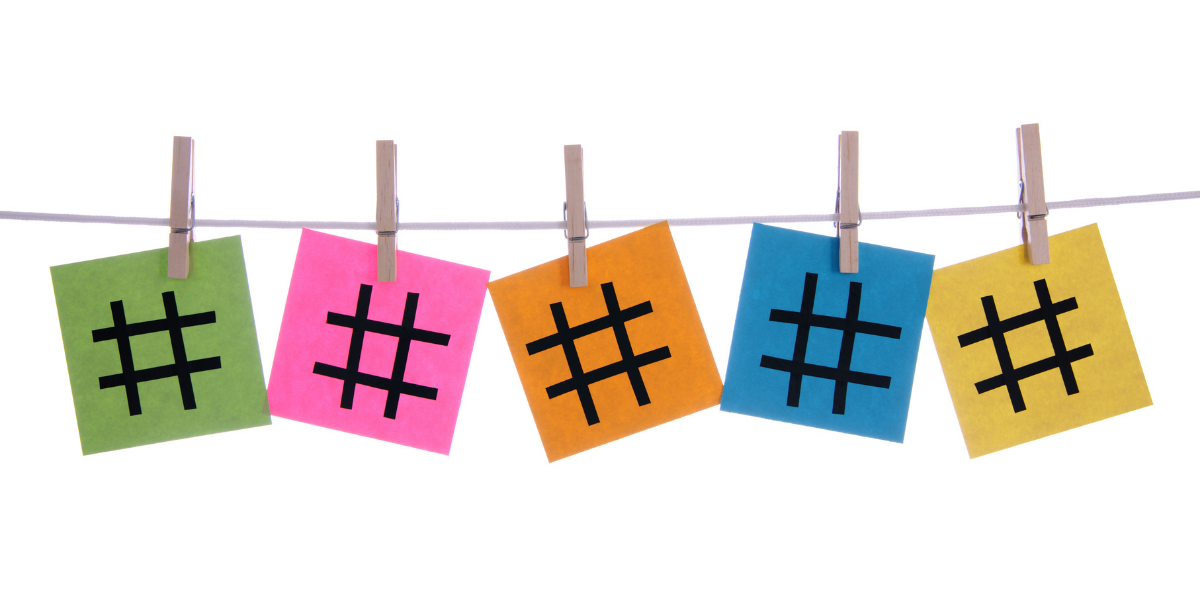“So what’s the deal with Instagram hashtag research? Do hashtags still matter?”
I get this question a lot and it’s a tough one to answer. The simple response is “yes,” but the rules have changed considerably since the platform first launched eight years ago.
Copy-and-pasting the same 20 hashtags into your caption will not guarantee you reach anymore. #SorryNotSorry is what the folks at Instagram would probably tell you, those days are long gone. Nowadays, if you’re looking to hashtags to give your post a boost in organic visibility, you will need to think strategically.
Fortunately, there is a rather straightforward way to do this and it starts with hashtag research. Taking a more thoughtful approach to the Instagram hashtags you use will get you better returns in the long run, in the forms of reach and engagement.
Here’s the Jasmine Williams Media approved, step-by-step guide to Instagram hashtag research. Let’s dive in, shall we?
1. Look for hashtags that align with your brand and your content
Hashtags are how people discover new content. Now that Instagram gives people the ability to follow hashtags in the same way they do users, they’re even more useful for getting your content in front of your target audience.
Of course, not any hashtag will do. For instance, if you run a meal delivery service, you want to avoid simple one-word hashtags like #food or #healthy. The more specific you can get, the better. For instance, hashtags like #superfoods or #cleaneating are a step in the right direction.
For people who are familiar with SEO principles, what you essentially want to do is find “long-tail” hashtags. These are hashtags with roughly two to three words. While these hashtags may not be as popular as the one-word ones, they offer major benefits (more on this later).
2. Look at bloggers, brands and influencers in your space for ideas
Stuck on step one? Trying to brainstorm some new hashtags and drawing a blank? Here’s an easy hack: just use the same ones that the bloggers, brands, and influencers in your space use.
While these accounts might also be your competitors, it can help take some of the guesswork out of the Instagram hashtag research process. After all, your competitors have likely done their homework and have already found hashtags that gets their content in front of the right audience. And you wouldn’t want your competitors getting all the attention now, would you?
3. Create a list of 30-40 hashtags that have been used between 30,000 to 70,000 times
So you’ve found some long-tail hashtags that are relevant to your brand. Amazing. Now you need to make sure these hashtags fall into the volume sweet spot. Just because a hashtag has been used millions of times, doesn’t mean you’re instantly going to get a ton of new likes and comments.
What that really means is that there’s way more competition. Remember our SEO analogy in step one? It’s the same principle with Instagram. Unless you also have millions of followers, the chances of your account’s content being seen with a high-volume hashtag are pretty slim.
Additionally, the focus is low. For example, when you’re looking for a particular item of clothing, do you type in “T-shirt” into Google or something like “Black women’s scoop-neck T-shirt”? If somebody’s searching for something on Instagram, they will use a more targeted hashtag to find it.
Lastly, using super general hashtags will get you the wrong kind of engagement (i.e. a ton of automated bot comments) and the wrong kind of attention from Instagram (i.e. shadowbanning).
While the experts go back and forth on this, a good rule of thumb is to seek out hashtags that have been used between 30,000 and 70,000 times. Hashtags with over 1 million uses are off limits.
4. Create hashtag lists (so you can make sure you’re not using the same ones all the time)
If you keep using the same hashtags, your posts will appear spammy (which is just not a good look). It’s important to switch up your Instagram hashtags in every post and make sure the hashtags are relevant to that specific piece of content.
I understand that it can be time-consuming to research specific hashtags for everything you post. What I like to do is pull four to five hashtags from my list and then add in a few post-specific hashtags to tailor my list to that particular post.
You can do this the lo-fi way by keeping a hashtag list in an accessible place like a bookmarked Google Doc or a desktop Sticky Note. Scheduling tools like Later and Planoly make this process even easier by giving you the option to make multiple saved lists.
Boom baby! That’s how you do Instagram hashtag research. While Instagram’s algorithm changes can be tricky to keep up with, remember this: the algorithm is geared towards promoting quality, engaging content. Your audience (and the platform) can sniff out inauthentic content in a heartbeat so remember to always be true to your brand and yourself.
This article was originally published at Jasmine Williams Media and is reprinted with permission.
Jasmine Williams is an award-winning writer, content marketing expert, and the founder of Jasmine Williams Media, a boutique content marketing consultancy serving a global roster of industry-leading companies and visionaries. She’s also the founder of Click-worthy Creatives, an education hub and community for freelance creatives. Jasmine helps creative entrepreneurs, coaches, consultants, and growth-stage startups scale their businesses with strategic storytelling.







